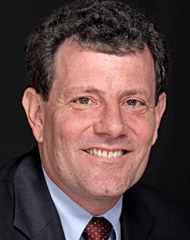Yeoh with a model of the Village At Pasir Panjang.
Its communications and corporate affairs manager, Yeoh Guan Jin, says private residential properties are still being sought after in the city state by Singaporeans and foreign buyers.
He says although the republic might be experiencing a slowdown due to the economic uncertainties in the eurozone and the United States, Singapore will be able to weather the situation.
“Mind you, there are still many wealthy Singaporeans and foreigners with Singapore permanent residents status looking for private residential properties here,” says Yeoh at a sales gallery showcasing SDB’s latest freehold residential project in Singapore, Village At Pasir Panjang.
Yeoh says the company is optimistic that the new project will receive positive response, similar to its completed and on-going project in the republic.
He says as Singapore continues to welcome and attract affluent people and expatriates from all over the world, demand for private residential properties here will remain good.
Yeoh adds Singapore’s close proximity with Malaysia is an added advantage for the company to attract Malaysians looking to invest in properties overseas.
“Our proven track record in the Klang Valley area and Singapore’s high transparency level will attract affluent Malaysians as well as foreigners to our project,” he says.
Yeoh says the company is attracted to launch a project in the western district of Singapore due to the availability of the land for redevelopment purposes.
He says SDB will continue to look for new sites from time to time for future development in other parts of Singapore as there are many land parcels available for redevelopment in the republic.
Village At Pasir Panjang, located at Pasir Panjang Road on 0.99ha, comprises nine five-storey blocks with attic and a basement car park.
The U-shaped development consists of 148 units of two, three and four-bedroom apartments with built-up area of 818 sq ft-2,303 sq ft and the price starts from S$1.4mil or S$1,650-S$1,660 per sq ft.
Works on the project with gross development value (GDV) of S$260mil will start next year with expected completion in the fourth quarter of 2016.
“We want to bring back the kampung atmosphere in our latest project; hence the name Village and also to reflect Pasir Panjang’s past which was once a kampung area,” says Yeoh.
He explains the architectural façade of the residences and the clubhouse draw references from the abstracted and interpreted “black and white” houses of the 1950s.
Yeoh says that apart from catering for owners-occupiers looking for properties in the western district of Singapore, those buying as an investment could expect to fetch good rental.
He says a two-bedroom apartment in the Pasir Panjang area fetches between S$3,000 and S$4,500 per month, while the monthly rental for a three-bedroom ranges from S$5,500 to S$6,500.
“The rental for a four-bedroom unit starts from S$7,000 and above, and I personally feel it is good investment for Malaysians,” says Yeoh.
SDB’s project in Singapore, the 22 units of low-rise condominiums called Jia at Wilkie Road with GDV of S$55mil was completed in December 2010.
It is currently developing the high-rise condominium project – Gilstead Two at Gilstead Road – consisting of 110 units with GDV of S$200mil.
The project is expected to be completed in the last quarter of 2014.
Other projects are Residences at Balestier Road in district 12 – the 18-storey apartment block consists of 104 apartment units and 10 retail shops and offices with GDV of S$102mil and is slotted for completion in the fourth quarter of 2015.
Hijauan On Cavenagh, located on Cavenagh Road in Singapore’s prestigious District 9, is expected to be completed in the third quarter of 2015.
Hijauan is within walking distance from Orchard Road and a tree-lined passageway behind the Istana and adjacent to 25,000 sq ft of lush state land.
The Istana is the official residence and working office for both the president and prime minister.
Related posts:
It’s a Smart, Smart, Smart World
Singapore job growth high, unemployment low, vacancies rise despite more layoffs







